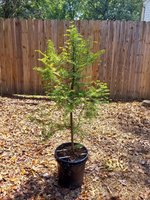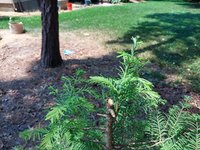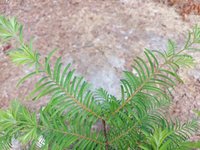bendem
Yamadori
Hi -
I'm new with bonsai and ordered a bald cypress online a few weeks back. It's in a one gallon container, which has been submerged since I got it, and the company's website describes the tree as: "One gallon trees are straight and pruned down to about 16 inches repeatedly with trunk calipers of about 3/4 inch." Right now the tree is actually about 30" tall with a trunk diameter of around 1".
Typically when I see people ask online about when to trunk chop their BC, I see guidance that they should wait until the trunk is at or near their intended maximum thickness.
But given that my tree has presumably been chopped a couple times already, should I work off the plan that the trunk is *not* going to get much thicker and it's a good time now for me to pick the tree's leader, think about where to make an angled cut from the chop, etc?
I realize this kind of a bassackwards question about how to proceed at this point. FWIW, I don't mind learning with this tree even if it doesn't have great potential.
Thanks!


I'm new with bonsai and ordered a bald cypress online a few weeks back. It's in a one gallon container, which has been submerged since I got it, and the company's website describes the tree as: "One gallon trees are straight and pruned down to about 16 inches repeatedly with trunk calipers of about 3/4 inch." Right now the tree is actually about 30" tall with a trunk diameter of around 1".
Typically when I see people ask online about when to trunk chop their BC, I see guidance that they should wait until the trunk is at or near their intended maximum thickness.
But given that my tree has presumably been chopped a couple times already, should I work off the plan that the trunk is *not* going to get much thicker and it's a good time now for me to pick the tree's leader, think about where to make an angled cut from the chop, etc?
I realize this kind of a bassackwards question about how to proceed at this point. FWIW, I don't mind learning with this tree even if it doesn't have great potential.
Thanks!










